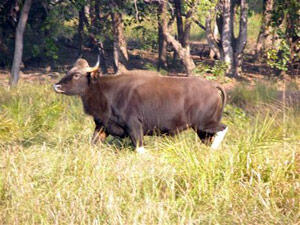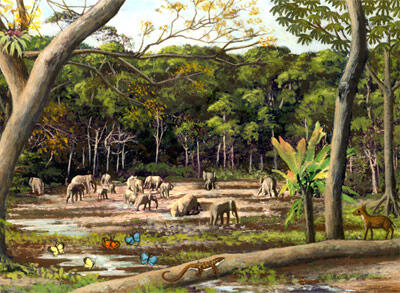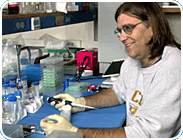Dear Katie,

To solve the endangered animal species' population problem, can scientists clone and breed endangered animal species — and have no genetic defects?
— Katie C., Grade 7
Molecular biologist Rob DeSalle answers this question:
It is indeed possible to clone animals and to specifically clone endangered animals. You are right, though, that some of these cloned animals have defects. But we don't know if these are genetic defects. One example that comes to mind is Noah the cloned gaur. Noah was cloned from tissues from a gaur, and he developed in a cow surrogate mother. But Noah died shortly after his birth of an infection that was unrelated to the cloning procedure.

Gaurs are a kind of large cow. They are an endangered species.
While we can clone endangered animals, I want us to think about the consequences. First of all, it is very costly to clone animals. In order to get one clone to work, scientists have to make many, many (sometimes 200 to 300) attempts, most of which fail. Also, once a single animal is cloned, in order for it to be useful in conservation biology it needs to reproduce. So scientists might need to clone more than one. This is especially true if the species cloned is an extinct species like the Tasmanian Wolf or a Woolly Mammoth.
At this point in time, conservation biology is not so much about saving particular, individual species. Rather, it is more about saving "areas" of the planet in order to preserve biodiversity . These habitats are crucial to the existence of species in nature. So I think the large amount of money spent on cloning endangered animals can be more wisely directed towards preserving habitats.

Instead of cloning endangered animals, we can try to protect them by conserving their habitats.
For example, we might spend one billion dollars on cloning a thousand endangered animals (at one million dollars per clone) that might not survive even if cloned. Imagine now, using that same one billion dollars to buy reserves and areas that are in dire need of preservation. Instead of affecting a thousand species, we might have an impact on tens of thousands species.
I am not suggesting that cloning is useless. It is extremely useful in understanding how animals reproduce. Cloning also has its uses in agriculture, where it was first developed. But when it comes to biodiversity and conservation, it is best to spend the money on conserving habitats.
Thanks for the question!
Rob
Explore More:
- Find out All About Cloning with a sheep named Dolly .
- Read more about Rob DeSalle and Being a Molecular Biologist.

Name:
Rob DeSalle
Job Title:
Curator, Division of
Invertebrate
Zoology
Known For:
Rob is a molecular biologist. He uses
genetics
to help endangered species. He is in charge of a genetics lab at the Museum. The lab's machines can sequence the DNA of hundreds of organisms in one day!
Cool Fact:
By analyzing
DNA
, Rob and a team of scientists discovered that there are actually three species of right whales, not just two. This change in species status helps protect the whale.




 Biodiversity
Biodiversity
 Brain
Brain
 Genetics
Genetics
 Marine BiOLogy
Marine BiOLogy
 MicrobiOLogy
MicrobiOLogy
 PaleontOLogy
PaleontOLogy
 ZoOLogy
ZoOLogy
 AnthropOLogy
AnthropOLogy
 ArchaeOLogy
ArchaeOLogy
 Astronomy
Astronomy
 Climate Change
Climate Change
 Earth
Earth
 Physics
Physics
 Water
Water
